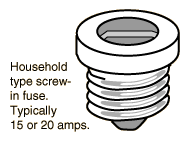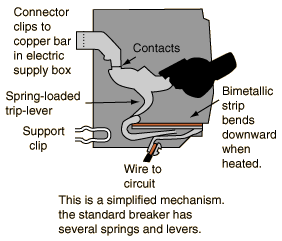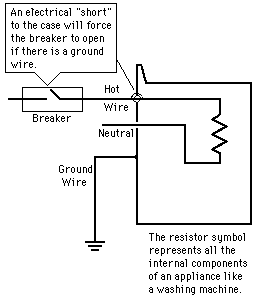|
Three electrical connections are made to a standard appliance like a clothes washing machine. The "hot" wire carries an effective voltage of 120 volts to the appliance and the neutral serves as a return path. The third wire is the electrical ground which is just connected to the metal case of the appliance.
If the hot wire shorts to the case of the appliance, the 120 volt supply will be applied to the very low resistance path through the ground wire to the earth. This will cause an extremely high current to flow and will cause the breaker or fuse to interrupt the circuit.
One problem with this arrangement is that if the ground wire is broken or disconnected, it will not be detectable from the operation of the appliance since the ground wire is not a part of the circuit for electric current flow. In that case, if the hot wire shorts to the case and the neutral wire does not, then the breaker may not trip and the entire 120 volts will be applied to the metal case of the appliance, representing a shock hazard. The ground wire of an appliance is the main protection against shock hazard.
| 



